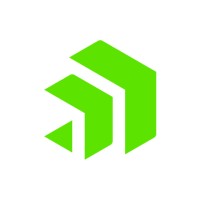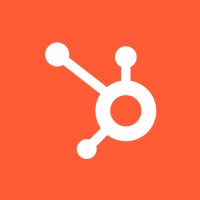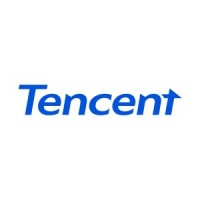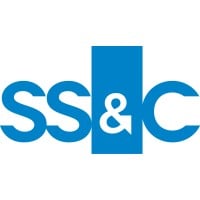
Progress Company Cyber Security Posture
progress.comProgress (Nasdaq: PRGS) empowers organizations to achieve transformational success in the face of disruptive change. Our software enables our customers to develop, deploy and manage responsible AI-powered applications and digital experiences with agility and ease. Customers get a trusted provider in Progress, with the products, expertise and vision they need to succeed. Over 4 million developers and technologists at hundreds of thousands of enterprises depend on Progress. Learn more at www.progress.com.
Progress Company Details
progress-software
3680 employees
67953.0
511
Software Development
progress.com
Scan still pending
PRO_2072615
In-progress
Between 900 and 1000
This score is AI-generated and less favored by cyber insurers, who prefer the TPRM score.
 Progress Global Score
Progress Global Score.png)

Progress Company Scoring based on AI Models
| Model Name | Date | Description | Current Score Difference | Score |
|---|---|---|---|---|
| AVERAGE-Industry | 03-12-2025 | This score represents the average cybersecurity rating of companies already scanned within the same industry. It provides a benchmark to compare an individual company's security posture against its industry peers. | N/A | Between 900 and 1000 |
Progress Company Cyber Security News & History
| Entity | Type | Severity | Impact | Seen | Url ID | Details | View |
|---|---|---|---|---|---|---|---|
| Progress Software | Breach | 100 | 5 | 05/2023 | PRO212050724 | Link | |
Rankiteo Explanation : Attack threatening the organization’s existenceDescription: Progress Software, a US-based firm, fell victim to a global cyberattack executed by Russian cybercriminals exploiting a vulnerability in their MOVEit software. This breach has affected several US federal agencies, including the Department of Energy, alongside 'several hundred' companies and organizations within the US. Despite the attackers being known to demand multimillion-dollar ransoms, no demands have been made towards federal agencies thus far. The impact of this hacking spree has extended to major US universities and state governments, with sensitive personal and financial information at risk of theft. The Department of Energy confirmed records from two of its entities had been compromised, with immediate actions taken to mitigate the impact. This widespread hacking campaign, exploiting a newly discovered vulnerability in widely used software, has put significant pressure on federal officials and highlights the continued vulnerability of critical infrastructure and data to cyber threats. | |||||||
| Progress Software | Breach | 100 | 5 | 06/2023 | PRO205050824 | Link | |
Rankiteo Explanation : Attack threatening the organization’s existenceDescription: A global cyberattack targeting US federal government agencies and companies exploited a vulnerability in MOVEit software, made by Progress Software. The breach, orchestrated by Russian cybercriminals, affected the Department of Energy, including specific entities like Oak Ridge Associated Universities and a contractor for the Department of Energy's Waste Isolation Pilot Plant in New Mexico. While no ransom demands were reported to federal agencies, the potential for significant data loss and disruption is evident. The attackers, belonging to the ransomware gang Clop, threatened to leak sensitive data if ransoms were not paid, posing a significant threat to financial, personal, and national security information. Johns Hopkins University and Georgia's state-wide university system are among the victims, indicating the breach's extensive impact on educational institutions, government entities, and potentially critical infrastructure. | |||||||
| Progress Software | Breach | 100 | 5 | 03/2023 | PRO313051324 | Link | |
Rankiteo Explanation : Attack threatening the organization’s existenceDescription: Russian cybercriminals exploited a software vulnerability within MOVEit, a product of Progress Software, affecting multiple US federal agencies and hundreds of companies. The Department of Energy and Oak Ridge Associated Universities have confirmed breaches, leading to an urgent response from CISA. No federal agency has faced any significant disruptions, though personal and financial information may have been compromised. Progress Software has identified a second vulnerability and is working on fixes. Victims span various sectors including universities, healthcare systems, and the government. Ransomware group CLOP is associated with the attack, though no federal ransoms have been requested. | |||||||
| Progress Software | Cyber Attack | 100 | 5 | 05/2023 | PRO304050624 | Link | |
Rankiteo Explanation : Attack threatening the organization’s existenceDescription: Several US federal government agencies and 'several hundred' companies and organizations in the US have been compromised in a global cyberattack leveraging a vulnerability in MOVEit, a widely used data transfer software made by Progress Software. Russian cybercriminals, associated with the ransomware gang Clop, have exploited this vulnerability without making specific ransom demands from federal agencies yet. Progress Software identified a second vulnerability in the aftermath, leading to urgent remediation efforts. The Department of Energy confirmed breaches in two of its entities, including Oak Ridge Associated Universities and a contractor related to the Waste Isolation Pilot Plant in New Mexico. Additionally, notable victims like Johns Hopkins University and Georgia’s state-wide university system have reported potential theft of sensitive data due to the hack. This incident underscores the critical nature of software vulnerabilities and the broad, opportunistic approach of cybercriminals targeting essential services and sensitive information. | |||||||
| Progress Software | Cyber Attack | 100 | 5 | 06/2023 | PRO504050624 | Link | |
Rankiteo Explanation : Attack threatening the organization’s existenceDescription: Several US federal government agencies and 'several hundred' companies and organizations in the US have been compromised in a global cyberattack conducted by Russian cybercriminals. The attackers exploited vulnerabilities in MOVEit, a piece of widely used software developed by Progress Software, for transferring data securely. Despite no significant impacts being reported on federal civilian agencies, the Department of Energy confirmed breaches, including one affecting Oak Ridge Associated Universities and another linked to the department's Waste Isolation Pilot Plant in New Mexico. Additionally, Johns Hopkins University, Georgia's state-wide university system, and other entities have reported potential breaches, raising concerns over sensitive personal and financial information being compromised. The attack has heightened the urgency for remediation and defense against ransomware and cyberattacks, particularly with the discovery of a second vulnerability in MOVEit software. | |||||||
| Progress Software | Ransomware | 100 | 5 | 05/2023 | PRO416050724 | Link | |
Rankiteo Explanation : Attack threatening the organization’s existenceDescription: In a significant cybersecurity event, Progress Software, the maker of MOVEit, a widely used software for data transfer, was exploited by Russian cybercriminals. The attack targeted several US federal government agencies and could potentially impact hundreds of companies and organizations in the US. Despite the vast scale of the attack, exploiting MOVEit's vulnerabilities, no significant impacts have been reported on federal civilian agencies. The Department of Energy, among other federal entities, acknowledged breaches, fostering urgent investigations and remediation efforts. Notably, sensitive data from institutions like Johns Hopkins University may have been compromised, highlighting the far-reaching implications. This incident underscores the persistent cybersecurity challenges facing enterprises and government entities, emphasizing the need for robust security protocols and rapid response mechanisms to mitigate potential threats. | |||||||
| Progress Software | Ransomware | 100 | 5 | 03/2023 | PRO340051324 | Link | |
Rankiteo Explanation : Attack threatening the organization’s existenceDescription: US federal government agencies and 'several hundred' US companies and organizations have been compromised by a global cyberattack perpetrated by Russian cybercriminals. The attackers exploited a vulnerability in MOVEit, a file transfer software developed by Progress Software. The Department of Energy confirmed breaches, including one affecting a not-for-profit research center and another associated with waste disposal for atomic energy. Hospitals, universities, and state governments have also felt the impact of the attack. The Clop ransomware group, although demanding multimillion-dollar ransoms generally, has not targeted federal agencies for payment. As the attack unfolded, Progress Software identified a further vulnerability in MOVEit and took swift measures to resolve it, while also taking MOVEit Cloud offline. The breadth of the attack highlights the growing threat of ransomware and other cyberattacks to institutions and infrastructure across the United States. | |||||||
| Progress Software | Vulnerability | 100 | 5 | 05/2023 | PRO504050624 | Link | |
Rankiteo Explanation : Attack threatening the organization’s existenceDescription: Several US federal government agencies and 'several hundred' companies and organizations in the US have been impacted by a global cyberattack attributed to the Russian cybercriminal gang, Clop. Utilizing a vulnerability in the widely used MOVEit software, developed by Progress Software, the attackers have compromised sensitive data. Although the Department of Energy confirmed breaches within two of its entities, significant impacts on federal civilian agencies have not been reported. This cyberattack campaign, which began two weeks ago, has affected major US universities and state governments, highlighting the ongoing challenge of ransomware attacks. The situation is exacerbated by the discovery of a second vulnerability within the MOVEit software, prompting Progress Software to work urgently on a patch and take MOVEit Cloud offline to secure customer environments. | |||||||
| Progress Software | Vulnerability | 100 | 5 | 06/2023 | PRO1006050624 | Link | |
Rankiteo Explanation : Attack threatening the organization’s existenceDescription: Progress Software, the developer of MOVEit software, has been at the center of a global cyberattack attributed to Russian cybercriminals exploiting a vulnerability in its software. Affected entities include several US federal government agencies and 'several hundred' companies and organizations across the US, though no significant impacts on federal civilian agencies have been reported. Despite the broad scale of the attack, including breaches at the Department of Energy and potential data leaks involving sensitive personal and financial information at major US universities and state governments, the attackers have not made ransom demands of federal agencies. This incident highlights the opportunistic nature of the hackers and underscores the growing challenges of safeguarding against such cybersecurity threats, especially when critical vulnerabilities in widely used software are exploited. | |||||||
| Progress Software | Vulnerability | 100 | 5 | 03/2023 | PRO1006051224 | Link | |
Rankiteo Explanation : Attack threatening the organization’s existenceDescription: Several US federal agencies and 'several hundred' US companies and organizations have been affected by a global cyberattack perpetrated by Russian cybercriminals exploiting vulnerabilities in MOVEit software, made by Progress Software. The Department of Energy confirmed compromises within its entities, with potential leaks of sensitive personal and financial data, including health billing records from institutions like Johns Hopkins University. No significant impacts on federal civilian agencies have taken place, and opportunistic hacking attempts continue to target various sectors, applying pressure on officials committed to combating ransomware. Progress Software has communicated mitigation steps to customers and temporarily taken MOVEit Cloud offline for urgent patching. | |||||||
Progress Company Subsidiaries

Progress (Nasdaq: PRGS) empowers organizations to achieve transformational success in the face of disruptive change. Our software enables our customers to develop, deploy and manage responsible AI-powered applications and digital experiences with agility and ease. Customers get a trusted provider in Progress, with the products, expertise and vision they need to succeed. Over 4 million developers and technologists at hundreds of thousands of enterprises depend on Progress. Learn more at www.progress.com.
Access Data Using Our API

Get company history
.png)
Progress Cyber Security News
State of Healthcare Cybersecurity: Progress and Pitfalls
While the healthcare sector is making progress in cyber resilience, it still faces deep-rooted challenges, including collaboration, cyber workforce issues ...
Futurum Group Survey Surfaces DevSecOps Progress on Multiple Fronts
A survey of security leaders surfaces progress in software supply chain security, with ASPM and DevSecOps automation topping the list.
Daily Progress parent company victim of 'cybersecurity event'
An investigation has found that a "cybersecurity event" was behind the server outage that disrupted Daily Progress and other newspaper ...
10th Annual Cybersecurity Special Report by RSM US Details Sophisticated Threat Environment, Highlighting Progress and Risk Mitigation Opportunities
The RSM report provides insights into cybersecurity trends, strategies and concerns shaping the marketplace for midsize businesses, noting ...
Progress from our Frontier Red Team
In this post, we are sharing what we have learned about the trajectory of potential national security risks from frontier AI models, ...
Federal Executive Forum Zero Trust Strategies in Government Progress and Best Practices 2025
How far have agencies progressed in their zero trust journey, and how have strategies adapted to address emerging security challenges?
Fortinet Highlights Progress in Latest Sustainability Report
Fortinet demonstrates commitment to climate goals and cybersecurity skills development while improving product efficiency.
DOD Officials See Progress in Tackling Weapons Cybersecurity but a Long Way to Go
The Pentagon has made progress raising awareness among senior leaders about the need to take cybersecurity for weapons systems seriously.
Cisco, Hitachi, Microsoft, and Progress Flaws Actively Exploited—CISA Sounds Alarm
CISA adds five exploited vulnerabilities to its KEV catalog, including flaws in Cisco, Microsoft, and Progress software.

Progress Similar Companies

HubSpot
HubSpot is a leading CRM platform that provides software and support to help businesses grow better. Our platform includes marketing, sales, service, and website management products that start free and scale to meet our customers’ needs at any stage of growth. Today, thousands of customers around th

Tencent
Tencent is a world-leading internet and technology company that develops innovative products and services to improve the quality of life of people around the world. Founded in 1998 with its headquarters in Shenzhen, China, Tencent's guiding principle is to use technology for good. Our communication

GlobalLogic
GlobalLogic, a Hitachi Group Company, is a full-lifecycle product development services leader that combines chip-to-cloud software engineering expertise and vertical industry experience to help our customers design, build, and deliver their next generation products and digital experiences. We expert

iFood
O iFood é uma empresa brasileira de tecnologia, que aproxima clientes, restaurantes e entregadores de forma simples e prática. O iFood tem o propósito de alimentar o futuro do Brasil e do mundo, transformando a sociedade por meio da educação e da tecnologia, da segurança alimentar, da inclusão e co

Xiaomi Technology
Xiaomi Corporation was founded in April 2010 and listed on the Main Board of the Hong Kong Stock Exchange on July 9, 2018 (1810.HK). Xiaomi is a consumer electronics and smart manufacturing company with smartphones and smart hardware connected by an IoT platform at its core. Embracing our vision

SS&C Technologies
SS&C is a leading global provider of mission-critical, cloud-based software and solutions for the financial and healthcare industries. Named to the Fortune 1000 list as a top U.S. company based on revenue, SS&C (NASDAQ: SSNC) is a trusted provider to more than 20,000 financial services and healthcar

Frequently Asked Questions (FAQ) on Cybersecurity Incidents
Progress CyberSecurity History Information
Total Incidents: According to Rankiteo, Progress has faced 10 incidents in the past.
Incident Types: The types of cybersecurity incidents that have occurred include ['Cyber Attack', 'Breach', 'Ransomware', 'Vulnerability'].
Total Financial Loss: The total financial loss from these incidents is estimated to be {total_financial_loss}.
Cybersecurity Posture: The company's overall cybersecurity posture is described as Progress (Nasdaq: PRGS) empowers organizations to achieve transformational success in the face of disruptive change. Our software enables our customers to develop, deploy and manage responsible AI-powered applications and digital experiences with agility and ease. Customers get a trusted provider in Progress, with the products, expertise and vision they need to succeed. Over 4 million developers and technologists at hundreds of thousands of enterprises depend on Progress. Learn more at www.progress.com..
Detection and Response: The company detects and responds to cybersecurity incidents through {description_of_detection_and_response_process}.
Incident Details
Incident 1: Ransomware Attack
Title: {Incident_Title}
Description: {Brief_description_of_the_incident}
Date Detected: {Detection_Date}
Date Publicly Disclosed: {Disclosure_Date}
Date Resolved: {Resolution_Date}
Type: {Type_of_Attack}
Attack Vector: {Attack_Vector}
Vulnerability Exploited: {Vulnerability}
Threat Actor: {Threat_Actor}
Motivation: {Motivation}
Incident 2: Data Breach
Title: {Incident_Title}
Description: {Brief_description_of_the_incident}
Date Detected: {Detection_Date}
Date Publicly Disclosed: {Disclosure_Date}
Date Resolved: {Resolution_Date}
Type: {Type_of_Attack}
Attack Vector: {Attack_Vector}
Vulnerability Exploited: {Vulnerability}
Threat Actor: {Threat_Actor}
Motivation: {Motivation}
Common Attack Types: The most common types of attacks the company has faced are ['Breach', 'Cyber Attack', 'Ransomware', 'Vulnerability'].
Identification of Attack Vectors: The company identifies the attack vectors used in incidents through {description_of_identification_process}.
Impact of the Incidents
Incident 1: Ransomware Attack
Financial Loss: {Financial_Loss}
Data Compromised: {Data_Compromised}
Systems Affected: {Systems_Affected}
Downtime: {Downtime}
Operational Impact: {Operational_Impact}
Conversion Rate Impact: {Conversion_Rate_Impact}
Revenue Loss: {Revenue_Loss}
Customer Complaints: {Customer_Complaints}
Brand Reputation Impact: {Brand_Reputation_Impact}
Legal Liabilities: {Legal_Liabilities}
Identity Theft Risk: {Identity_Theft_Risk}
Payment Information Risk: {Payment_Information_Risk}
Incident 2: Data Breach
Financial Loss: {Financial_Loss}
Data Compromised: {Data_Compromised}
Systems Affected: {Systems_Affected}
Downtime: {Downtime}
Operational Impact: {Operational_Impact}
Conversion Rate Impact: {Conversion_Rate_Impact}
Revenue Loss: {Revenue_Loss}
Customer Complaints: {Customer_Complaints}
Brand Reputation Impact: {Brand_Reputation_Impact}
Legal Liabilities: {Legal_Liabilities}
Identity Theft Risk: {Identity_Theft_Risk}
Payment Information Risk: {Payment_Information_Risk}
Average Financial Loss: The average financial loss per incident is {average_financial_loss}.
Commonly Compromised Data Types: The types of data most commonly compromised in incidents are {list_of_commonly_compromised_data_types}.
Incident 1: Ransomware Attack
Entity Name: {Entity_Name}
Entity Type: {Entity_Type}
Industry: {Industry}
Location: {Location}
Size: {Size}
Customers Affected: {Customers_Affected}
Incident 2: Data Breach
Entity Name: {Entity_Name}
Entity Type: {Entity_Type}
Industry: {Industry}
Location: {Location}
Size: {Size}
Customers Affected: {Customers_Affected}
Response to the Incidents
Incident 1: Ransomware Attack
Incident Response Plan Activated: {Yes/No}
Third Party Assistance: {Yes/No}
Law Enforcement Notified: {Yes/No}
Containment Measures: {Containment_Measures}
Remediation Measures: {Remediation_Measures}
Recovery Measures: {Recovery_Measures}
Communication Strategy: {Communication_Strategy}
Adaptive Behavioral WAF: {Adaptive_Behavioral_WAF}
On-Demand Scrubbing Services: {On_Demand_Scrubbing_Services}
Network Segmentation: {Network_Segmentation}
Enhanced Monitoring: {Enhanced_Monitoring}
Incident 2: Data Breach
Incident Response Plan Activated: {Yes/No}
Third Party Assistance: {Yes/No}
Law Enforcement Notified: {Yes/No}
Containment Measures: {Containment_Measures}
Remediation Measures: {Remediation_Measures}
Recovery Measures: {Recovery_Measures}
Communication Strategy: {Communication_Strategy}
Adaptive Behavioral WAF: {Adaptive_Behavioral_WAF}
On-Demand Scrubbing Services: {On_Demand_Scrubbing_Services}
Network Segmentation: {Network_Segmentation}
Enhanced Monitoring: {Enhanced_Monitoring}
Incident Response Plan: The company's incident response plan is described as {description_of_incident_response_plan}.
Third-Party Assistance: The company involves third-party assistance in incident response through {description_of_third_party_involvement}.
Data Breach Information
Incident 2: Data Breach
Type of Data Compromised: {Type_of_Data}
Number of Records Exposed: {Number_of_Records}
Sensitivity of Data: {Sensitivity_of_Data}
Data Exfiltration: {Yes/No}
Data Encryption: {Yes/No}
File Types Exposed: {File_Types}
Personally Identifiable Information: {Yes/No}
Prevention of Data Exfiltration: The company takes the following measures to prevent data exfiltration: {description_of_prevention_measures}.
Handling of PII Incidents: The company handles incidents involving personally identifiable information (PII) through {description_of_handling_process}.
Ransomware Information
Incident 1: Ransomware Attack
Ransom Demanded: {Ransom_Amount}
Ransom Paid: {Ransom_Paid}
Ransomware Strain: {Ransomware_Strain}
Data Encryption: {Yes/No}
Data Exfiltration: {Yes/No}
Ransom Payment Policy: The company's policy on paying ransoms in ransomware incidents is described as {description_of_ransom_payment_policy}.
Data Recovery from Ransomware: The company recovers data encrypted by ransomware through {description_of_data_recovery_process}.
Regulatory Compliance
Incident 1: Ransomware Attack
Regulations Violated: {Regulations_Violated}
Fines Imposed: {Fines_Imposed}
Legal Actions: {Legal_Actions}
Regulatory Notifications: {Regulatory_Notifications}
Incident 2: Data Breach
Regulations Violated: {Regulations_Violated}
Fines Imposed: {Fines_Imposed}
Legal Actions: {Legal_Actions}
Regulatory Notifications: {Regulatory_Notifications}
Regulatory Frameworks: The company complies with the following regulatory frameworks regarding cybersecurity: {list_of_regulatory_frameworks}.
Ensuring Regulatory Compliance: The company ensures compliance with regulatory requirements through {description_of_compliance_measures}.
Lessons Learned and Recommendations
Incident 1: Ransomware Attack
Lessons Learned: {Lessons_Learned}
Incident 2: Data Breach
Lessons Learned: {Lessons_Learned}
Incident 1: Ransomware Attack
Recommendations: {Recommendations}
Incident 2: Data Breach
Recommendations: {Recommendations}
Key Lessons Learned: The key lessons learned from past incidents are {list_of_key_lessons_learned}.
Implemented Recommendations: The company has implemented the following recommendations to improve cybersecurity: {list_of_implemented_recommendations}.
References
Additional Resources: Stakeholders can find additional resources on cybersecurity best practices at {list_of_additional_resources}.
Investigation Status
Incident 1: Ransomware Attack
Investigation Status: {Investigation_Status}
Incident 2: Data Breach
Investigation Status: {Investigation_Status}
Communication of Investigation Status: The company communicates the status of incident investigations to stakeholders through {description_of_communication_process}.
Stakeholder and Customer Advisories
Incident 1: Ransomware Attack
Stakeholder Advisories: {Stakeholder_Advisories}
Customer Advisories: {Customer_Advisories}
Incident 2: Data Breach
Stakeholder Advisories: {Stakeholder_Advisories}
Customer Advisories: {Customer_Advisories}
Advisories Provided: The company provides the following advisories to stakeholders and customers following an incident: {description_of_advisories_provided}.
Initial Access Broker
Incident 1: Ransomware Attack
Entry Point: {Entry_Point}
Reconnaissance Period: {Reconnaissance_Period}
Backdoors Established: {Backdoors_Established}
High Value Targets: {High_Value_Targets}
Data Sold on Dark Web: {Yes/No}
Incident 2: Data Breach
Entry Point: {Entry_Point}
Reconnaissance Period: {Reconnaissance_Period}
Backdoors Established: {Backdoors_Established}
High Value Targets: {High_Value_Targets}
Data Sold on Dark Web: {Yes/No}
Monitoring and Mitigation of Initial Access Brokers: The company monitors and mitigates the activities of initial access brokers through {description_of_monitoring_and_mitigation_measures}.
Post-Incident Analysis
Incident 1: Ransomware Attack
Root Causes: {Root_Causes}
Corrective Actions: {Corrective_Actions}
Incident 2: Data Breach
Root Causes: {Root_Causes}
Corrective Actions: {Corrective_Actions}
Post-Incident Analysis Process: The company's process for conducting post-incident analysis is described as {description_of_post_incident_analysis_process}.
Corrective Actions Taken: The company has taken the following corrective actions based on post-incident analysis: {list_of_corrective_actions_taken}.
Additional Questions
General Information
Ransom Payment History: The company has {paid/not_paid} ransoms in the past.
Last Ransom Demanded: The amount of the last ransom demanded was {last_ransom_amount}.
Last Attacking Group: The attacking group in the last incident was {last_attacking_group}.
Incident Details
Most Recent Incident Detected: The most recent incident detected was on {most_recent_incident_detected_date}.
Most Recent Incident Publicly Disclosed: The most recent incident publicly disclosed was on {most_recent_incident_publicly_disclosed_date}.
Most Recent Incident Resolved: The most recent incident resolved was on {most_recent_incident_resolved_date}.
Impact of the Incidents
Highest Financial Loss: The highest financial loss from an incident was {highest_financial_loss}.
Most Significant Data Compromised: The most significant data compromised in an incident was {most_significant_data_compromised}.
Most Significant System Affected: The most significant system affected in an incident was {most_significant_system_affected}.
Response to the Incidents
Third-Party Assistance in Most Recent Incident: The third-party assistance involved in the most recent incident was {third_party_assistance_in_most_recent_incident}.
Containment Measures in Most Recent Incident: The containment measures taken in the most recent incident were {containment_measures_in_most_recent_incident}.
Data Breach Information
Most Sensitive Data Compromised: The most sensitive data compromised in a breach was {most_sensitive_data_compromised}.
Number of Records Exposed: The number of records exposed in the most significant breach was {number_of_records_exposed}.
Ransomware Information
Highest Ransom Demanded: The highest ransom demanded in a ransomware incident was {highest_ransom_demanded}.
Highest Ransom Paid: The highest ransom paid in a ransomware incident was {highest_ransom_paid}.
Regulatory Compliance
Highest Fine Imposed: The highest fine imposed for a regulatory violation was {highest_fine_imposed}.
Most Significant Legal Action: The most significant legal action taken for a regulatory violation was {most_significant_legal_action}.
Lessons Learned and Recommendations
Most Significant Lesson Learned: The most significant lesson learned from past incidents was {most_significant_lesson_learned}.
Most Significant Recommendation Implemented: The most significant recommendation implemented to improve cybersecurity was {most_significant_recommendation_implemented}.
References
Most Recent Source: The most recent source of information about an incident is {most_recent_source}.
Most Recent URL for Additional Resources: The most recent URL for additional resources on cybersecurity best practices is {most_recent_url}.
Investigation Status
Current Status of Most Recent Investigation: The current status of the most recent investigation is {current_status_of_most_recent_investigation}.
Stakeholder and Customer Advisories
Most Recent Stakeholder Advisory: The most recent stakeholder advisory issued was {most_recent_stakeholder_advisory}.
Most Recent Customer Advisory: The most recent customer advisory issued was {most_recent_customer_advisory}.
Initial Access Broker
Most Recent Entry Point: The most recent entry point used by an initial access broker was {most_recent_entry_point}.
Most Recent Reconnaissance Period: The most recent reconnaissance period for an incident was {most_recent_reconnaissance_period}.
Post-Incident Analysis
Most Significant Root Cause: The most significant root cause identified in post-incident analysis was {most_significant_root_cause}.
Most Significant Corrective Action: The most significant corrective action taken based on post-incident analysis was {most_significant_corrective_action}.
What Do We Measure?
















Every week, Rankiteo analyzes billions of signals to give organizations a sharper, faster view of emerging risks. With deeper, more actionable intelligence at their fingertips, security teams can outpace threat actors, respond instantly to Zero-Day attacks, and dramatically shrink their risk exposure window.
These are some of the factors we use to calculate the overall score:
Identify exposed access points, detect misconfigured SSL certificates, and uncover vulnerabilities across the network infrastructure.
Gain visibility into the software components used within an organization to detect vulnerabilities, manage risk, and ensure supply chain security.
Monitor and manage all IT assets and their configurations to ensure accurate, real-time visibility across the company's technology environment.
Leverage real-time insights on active threats, malware campaigns, and emerging vulnerabilities to proactively defend against evolving cyberattacks.




